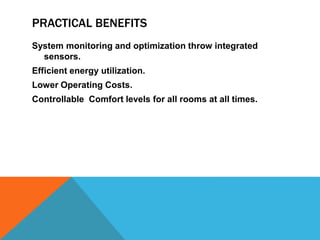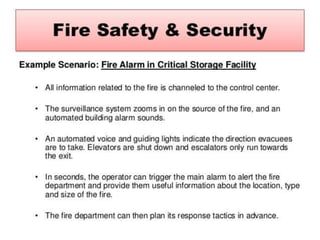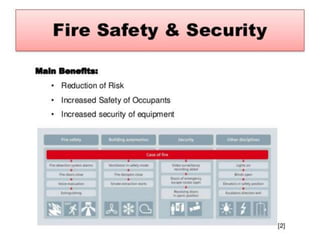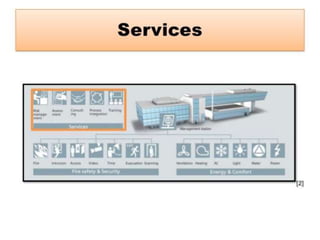Special systems
- 2. WHAT IS SYSTEM A “system” can be defined as an “Assembly” of interrelated or interdependent parts forming a more complex and unified whole and serving a common purpose. A “Building” can be understood to be the physical “Embodiment” of a number of “Systems” and “Subsystems” that must necessarily be related coordinated and “Integrated” with each other as well as with the “three- dimensional” form and “Spatial” organization of the building as a whole.
- 3. BUILDING’S SYSTEMS Structural System Enclosure System MEP Systems Special Systems
- 4. STRUCTURAL SYSTEM The “Structural” system of a building is “Designed” and “constructed” to support and transmit applied “Gravity” and lateral loads safely to the “Ground” without exceeding the allowable “Stresses” in its members.
- 5. ENCLOSURE & MEP SYSTEMS The enclosure system is the “shell” or envelope of a building consisting of the “Roof” exterior “Walls” windows and “Doors”. The MEP systems of a building provide essential “Services” to a building.
- 6. SPECIAL SYSTEMS Energy & Comfort Fire Safety & Security Services
- 9. PRACTICAL BENEFITS System monitoring and optimization throw integrated sensors. Efficient energy utilization. Lower Operating Costs. Controllable Comfort levels for all rooms at all times.
- 10. FIRE SAFETY & SECURITY Water Sprinkles for Fire Smoke Detectors Video Access Time Evacuation Scanning
- 14. 0


















